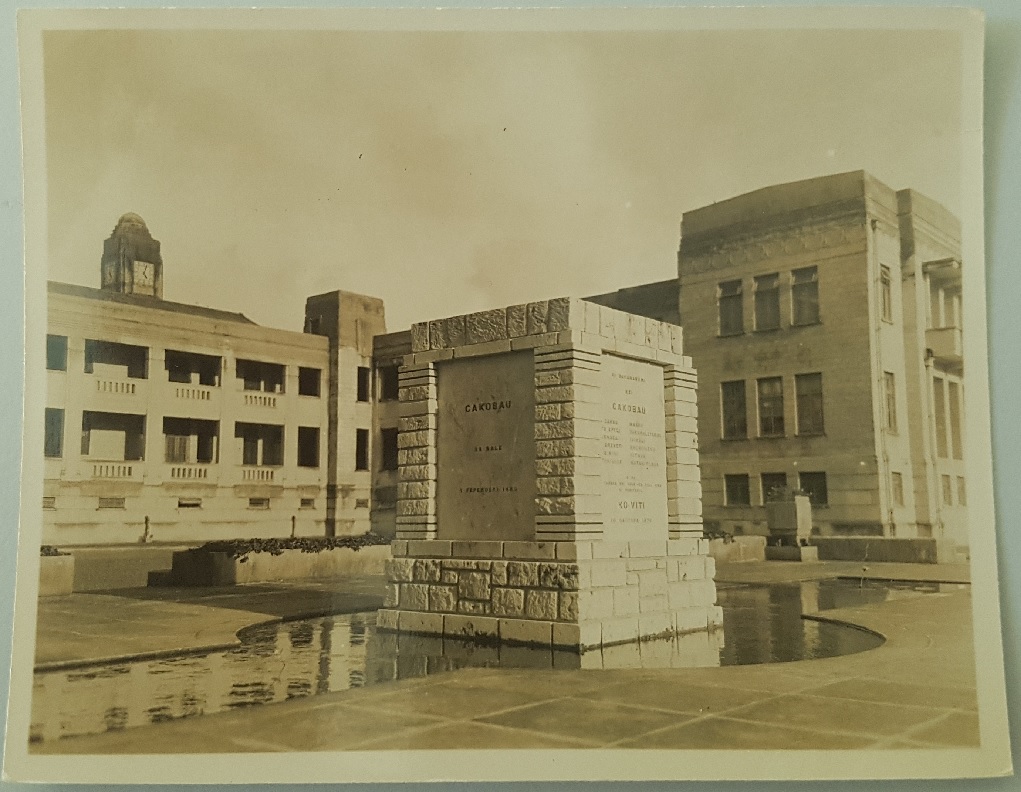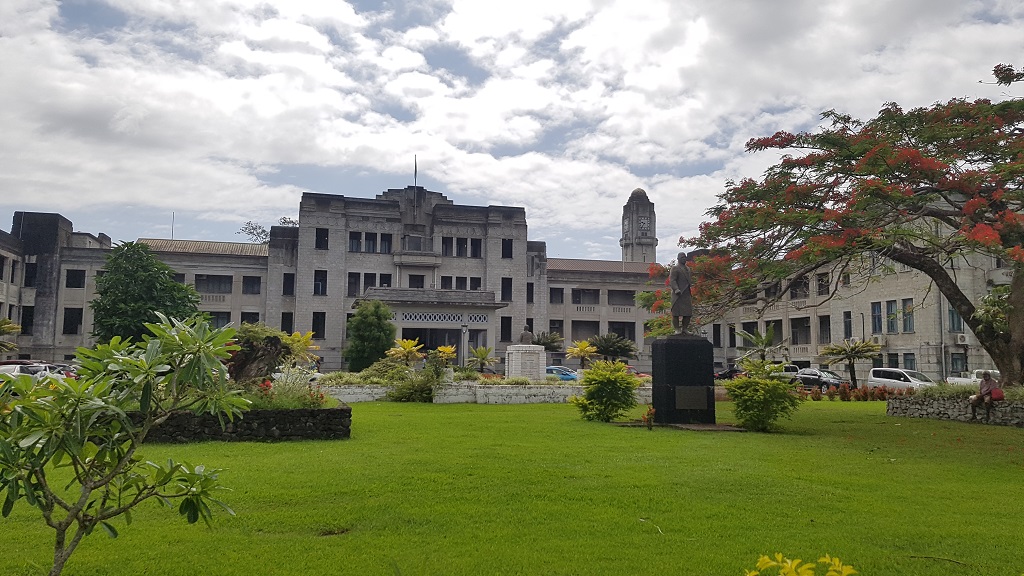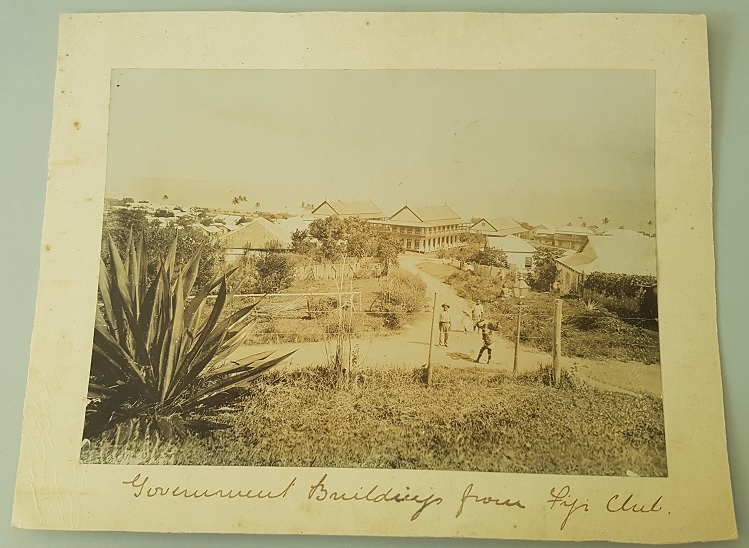Government Buildings
Originally comprised of wooden buildings relocated from Levuka, the government buildings precinct today includes the Parliament of Fiji, the law courts and other government ministries. The art deco design was completed in 1939 and includes a unique clock tower with a dome covered in glazed tiles.
Last updated on 27 May 2025




Timeline
1871
The first European settlers attempted to set up a government system in Levuka. Ratu Cakobau was proclaimed the ‘Tui Viti’, and a first attempt to set up a parliament was made.
1874
This initial experiment failed and a Deed of Cession was signed making Fiji a British Crown colony. A Legislative Council was formed, headed by the British Governor. Levuka remained the administrative centre.
1882
A new government precinct was established at the southern end of the Suva peninsula. Some government buildings were dismantled and transported from Levuka. A large stone obelisk was constructed (the base of which now sits a statue of Cakobau at the Victoria Road entrance.)
1939
A new government building was constructed in an art deco style designed by architect Walter Frederick Hedges.
1970
Fiji became independent and the Legislative Council was renamed the House of Representatives. Ratu Sir Kamisese Mara, the leader of the Alliance party, was the first Prime Minister. The first Parliament session was held in the government-building precinct on Victoria Parade.
1987
On 14 May ten masked armed soldiers entered the House of Representatives and Lieutenant Colonel Sitiveni Rabuka succeeded in overthrowing the government. In October he declared Fiji a republic, abrogated the constitution and declared himself head of an interim military government.
1992
The first election since the military coups of 1987 was held in May. Rabuka became Prime Minister. In June a new Parliament complex was opened in Veiuto, built with indigenous Fijian designs.
2013
Parts of the original government buildings on Victoria Parade were renovated, including the unique Synchronome clock tower. A new constitution was promulgated by a military-backed interim government following a coup in 2006. It replaced the Senate and House of Representatives with a 50-member Parliament chamber.
2014
Parliament returned to the government buildings in Victoria Parade.
References
Journal of the Legislative Council and of the House of Representative. (1970). Suva: Government Press.
Judy Tudor (1972) Handbook of Fiji, Sydney: Pacific Publication.
Elsie Stephenson (1997) Fiji’s Past on Picture Postcards, Suva: Caines Jannif.